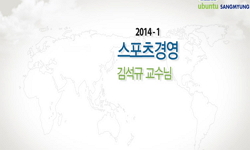Antinuclear antobodies (ANAs) occur in virtually all patients with systemic lupus erythematosus and in a large portion of patients with other connective tissue diseases. Some ANAs almost surely participate in the generation of tissue injury and were r...
http://chineseinput.net/에서 pinyin(병음)방식으로 중국어를 변환할 수 있습니다.
변환된 중국어를 복사하여 사용하시면 됩니다.
- 中文 을 입력하시려면 zhongwen을 입력하시고 space를누르시면됩니다.
- 北京 을 입력하시려면 beijing을 입력하시고 space를 누르시면 됩니다.

전신성홍반루프스에서의 항 ENA 항체의 출현빈도 및 임상적 의의 = The Frequencies and Clinical Significances of Autoantibodies to Extractable Nuclear Antigens in Systemic Lupus Erythematosus
한글로보기https://www.riss.kr/link?id=A3305615
- 저자
- 발행기관
- 학술지명
- 권호사항
-
발행연도
1987
-
작성언어
-
-
주제어
ENA ; Sm ; nRNP ; SS - A / Ro ; SS - B / La
-
KDC
500
-
등재정보
KCI등재후보
-
자료형태
학술저널
- 발행기관 URL
-
수록면
172-180(9쪽)
- 제공처
- 소장기관
-
0
상세조회 -
0
다운로드
부가정보
다국어 초록 (Multilingual Abstract)
Antinuclear antobodies (ANAs) occur in virtually all patients with systemic lupus erythematosus and in a large portion of patients with other connective tissue diseases. Some ANAs almost surely participate in the generation of tissue injury and were recognized as important parameter for the diagnosis and treatment of patients with various connective tissue diseases. Extractable nuclear antigens (ENAs) contain ribonucleoprotein, Sm, SS-A/Ro, SS-B/La, and other antigens. To determine the diagnostic and clinical usefulness of autoantibodies to these antigens, we studied the frequencies of autoantibodies to these antigens and their correlation with laboratory and clinical features in systemic lupus erythematasus. The results were as follows; 1) The frequency of autoantibody to extractable nuclear antigen using calf thymus extract as antigen source was slightly higher than that using rabbit thymus extract. But this difference was not statistically sipnificant (p>0.05). 2) The frequence of autoantibody to extractable nuclear antigen was 50.0%. The frequencies of autoantibodies to Sm, nRNP, and SS-A/Ro were 26.0%, 46.0%, and 60.8% respectively. But the autoantibody to SS-B/ La was not detected in all patients. 3) The frequence of speckled pattern on fluorescent antinuclear anbtibody test in anti-Sm and/or anti-nRNP antibody positive group was higher than that in negative group (p=0.015). 4) The frequence of skin rash in anti-Sm and /7or anti-nRNP positive group was lower than that in negative group (p=0.035) 5)The presence of autoantibody to SS-A/Ro was no clinical and laboratory difference between anti-SS-A/ Ro antibody positive and negative groups (p>0.05) . 6) ANA-negative lupus using fluorescent antinuclear antibody test represents 15% and frequence of anti-Ro in their sera was approximately 83.3%. These results suggest that autoantibodies to extractable nuclear antigens were useful parameter for the diagnosis and informed some clinical courses in systemic lupus erythematous.
동일학술지(권/호) 다른 논문
-
당뇨병환자에서의 인공취도를 이용한 Insulin 요구를 측정
- 대한내과학회
- 이태희(Tai Hee Lee)
- 1987
- KCI등재후보
-
한국인 신이식환자에서 Cyclosporin A 의 약리역동학적 연구
- 대한내과학회
- 권오선(O Sun Kwon)
- 1987
- KCI등재후보
-
여러 질환에서의 Antinuclear Antibody ( ANA ) Test 에 관한 연구
- 대한내과학회
- 조철호(Chul Ho Cho)
- 1987
- KCI등재후보
-
승모판막 질환에서의 Doppler 심초음파도를 이용한 확장기 좌심방 - 좌심실 평균 압력차에 대한 연구
- 대한내과학회
- 김효수(H . S . Kim)
- 1987
- KCI등재후보




 KISS
KISS




